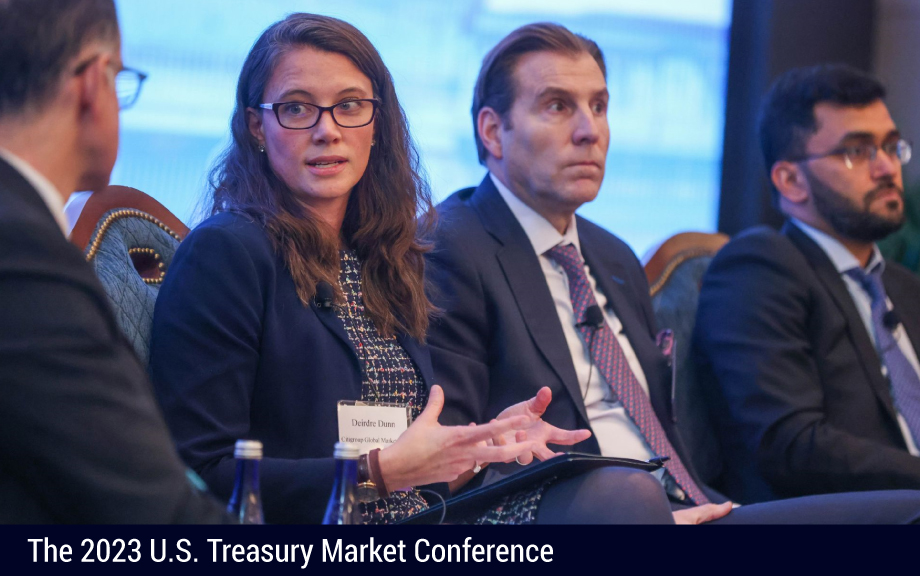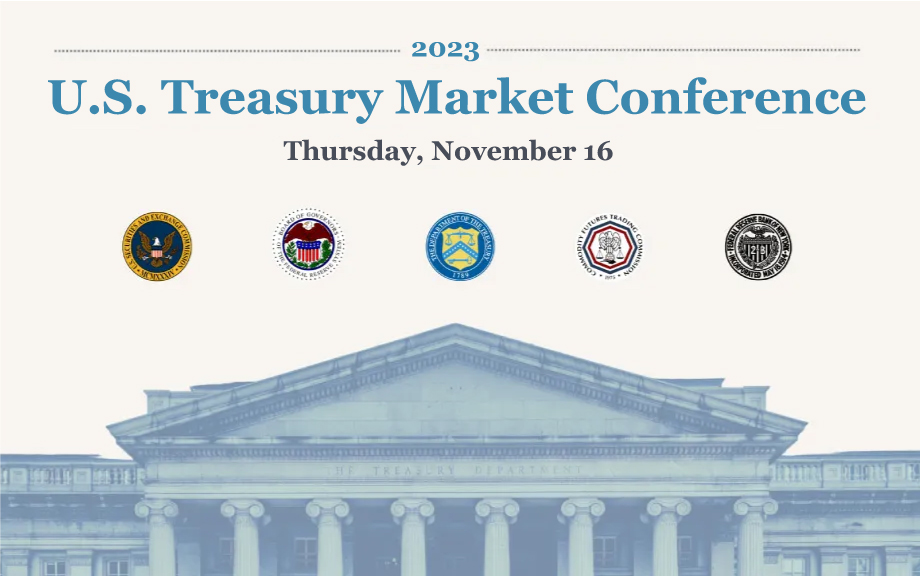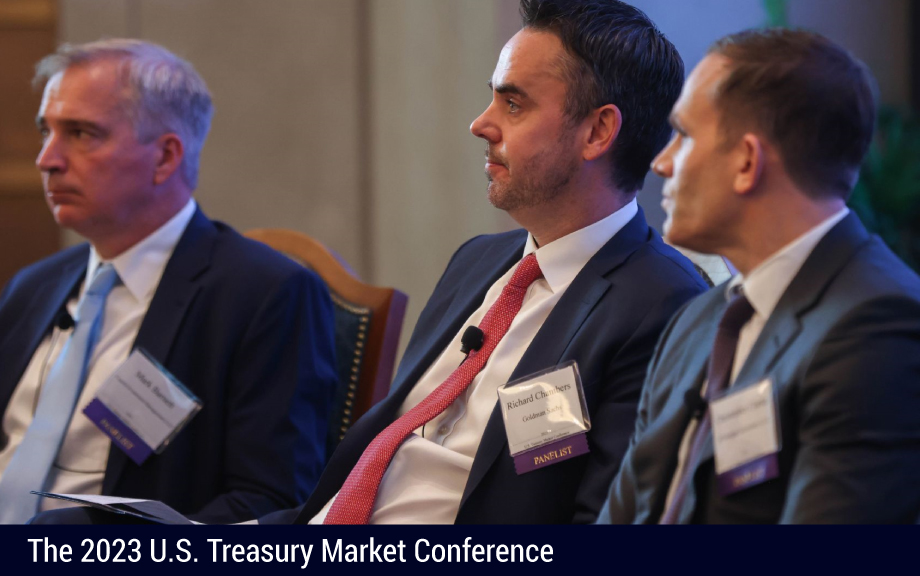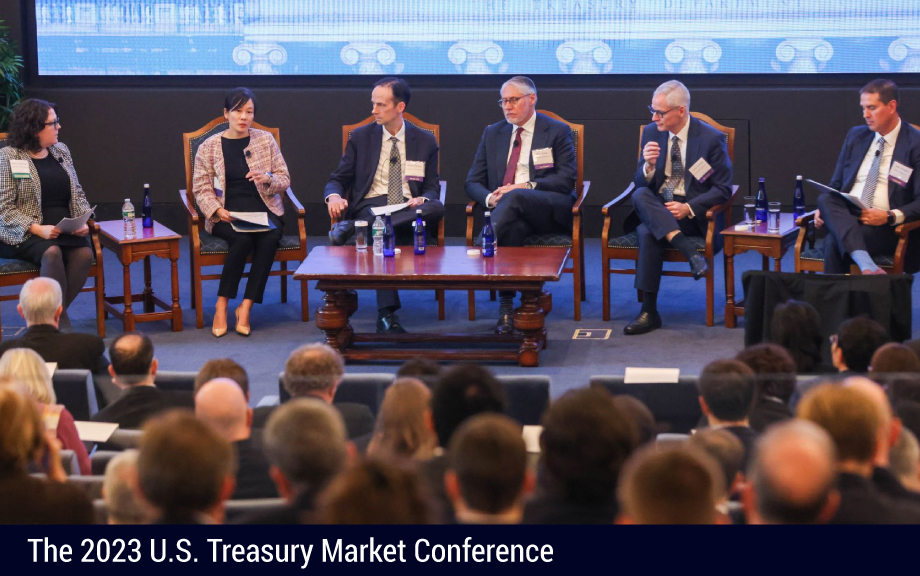
At the ninth annual U.S. Treasury Market Conference, Josh Frost, from the U.S. Department of the Treasury, moderated a panel soliciting perspectives on the future of the Treasury cash market. The panel included representatives from two asset management firms, a primary dealer, and the New York Fed.
Near-term Expectations for the Market
The panel opened by exploring how the Treasury market may evolve over the next five years, assuming official-sector proposals to make the market more resilient have been implemented. Most panelists said they were looking forward to increased data and transparency, which is likely to be a byproduct of broader central clearing in the Treasury market. One panelist pointed to improvements in data analysis capabilities and transparency for derivatives following that market’s central clearing mandate. Some panelists expect more operational efficiencies, with more automation in trade execution and fewer trade fails given central clearing. Panelists noted the importance of focusing on the overall market and not rolling out separate changes to individual parts of the market or being too hasty with implementing official-sector proposals.
Regarding the development of execution protocols, some panelists highlighted how technology was increasing the efficiency of on-the-run trading, especially with intermediation strategies by principal trading firms (PTFs). The market may see further adoption of bilateral streaming and private central limit order books in particular, which one panelist noted could lead to poorer visibility and meaningful holes in the data.
For the off-the-run Treasury market, some said the current request-for-quote and voice trading protocols will likely remain. They also said the off-the-run market will likely continue to rely more on dealers, rather than PTFs, for intermediation. While there may be a broader adoption of all-to-all trading—which would help with gross capacity and trade matching in off-the-runs—all-to-all may not be well-suited for larger trade sizes and volumes. Panelists said that in times of stress, participants may continue to fall back on the more manual, trust-based trading protocols, such as voice. One panelist highlighted growth in passive investing-related transactions, which have contributed to higher month-end-rebalancing-type trade activity and said the market may adjust to better accommodate this trend soon.
Watchpoints Over a Longer Horizon
The discussion also covered the possible impacts of technological developments in the next two decades. Some panelists highlighted the possibility of more settlement efficiencies with blockchain technology, although the impact of instant settlement for example would likely warrant further assessment. Panelists observed that developments in artificial intelligence could improve efficiencies in back- and middle-office operations, which may pass through to the front-end.
Panelists had mixed views on intermediation and what it may look like in the next couple of decades. The panelists saw a similar role for the dealer community in the future, and some noted that it was important not to disincentivize or push primary dealers away from the market given their role in times of stress. One panelist highlighted potential increased attention on whether the Treasury security maintains its status as a risk-free, cash-like asset if the growth in the supply of Treasury securities outpaces the banking system and broader economy. They noted that many of the initiatives being considered—such as broader or enhanced central clearing, all-to-all trading, and cross-margining allowances—would reduce the monetary intensity of Treasury intermediation, although additional measures may be needed over the longer horizon.
The panelists saw important ongoing roles for both the official and private sectors to attract additional participants, or risk capital, to market-making activities in Treasuries. Panelists noted the importance of improved transparency in Treasuries in attracting additional capital to the market. A few panelists noted there should also be some caution and due diligence around attracting additional participants to the market given, for instance, risks of overconcentration in strategies. The asset manager noted that there appears to be a gap in the supply of fixed income exchange-traded fund, or to be announced, type products that could be attractive to end users seeking general interest rate exposure. Some panelists also stated that the repo market should, or may need to, grow over the next couple of decades to better accommodate financing in the cash Treasury market.
A replay of this panel is available on the 2023 U.S. Treasury Market Conference event page, starting 3 hours, 34 minutes and 41 seconds into the embedded video.
Erica Gutman is a market operations and analysis associate in the Markets Group.
Brian Greene is a capital markets trading associate director in the Markets Group.
Also in this series:
The views expressed in this article are those of the contributing authors and do not necessarily reflect the position of the New York Fed or the Federal Reserve System.













